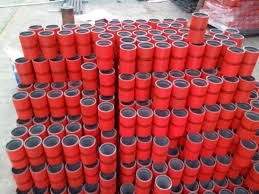- Afrikaans
- Albanian
- Amharic
- Arabic
- Armenian
- Azerbaijani
- Basque
- Belarusian
- Bengali
- Bosnian
- Bulgarian
- Catalan
- Cebuano
- Corsican
- Croatian
- Czech
- Danish
- Dutch
- English
- Esperanto
- Estonian
- Finnish
- French
- Frisian
- Galician
- Georgian
- German
- Greek
- Gujarati
- Haitian Creole
- hausa
- hawaiian
- Hebrew
- Hindi
- Miao
- Hungarian
- Icelandic
- igbo
- Indonesian
- irish
- Italian
- Japanese
- Javanese
- Kannada
- kazakh
- Khmer
- Rwandese
- Korean
- Kurdish
- Kyrgyz
- Lao
- Latin
- Latvian
- Lithuanian
- Luxembourgish
- Macedonian
- Malgashi
- Malay
- Malayalam
- Maltese
- Maori
- Marathi
- Mongolian
- Myanmar
- Nepali
- Norwegian
- Norwegian
- Occitan
- Pashto
- Persian
- Polish
- Portuguese
- Punjabi
- Romanian
- Russian
- Samoan
- Scottish Gaelic
- Serbian
- Sesotho
- Shona
- Sindhi
- Sinhala
- Slovak
- Slovenian
- Somali
- Spanish
- Sundanese
- Swahili
- Swedish
- Tagalog
- Tajik
- Tamil
- Tatar
- Telugu
- Thai
- Turkish
- Turkmen
- Ukrainian
- Urdu
- Uighur
- Uzbek
- Vietnamese
- Welsh
- Bantu
- Yiddish
- Yoruba
- Zulu
Durable Stainless Steel Coupler Fittings for Reliable Connections and Seamless Assembly
Understanding Stainless Steel Coupler Fittings
Stainless steel coupler fittings are essential components widely used in various industries for connecting pipes and tubes. Designed to provide a durable and reliable connection, these fittings are celebrated for their strength, resistance to corrosion, and versatility. This article delves into the world of stainless steel coupler fittings, highlighting their applications, advantages, and maintenance tips.
What Are Stainless Steel Coupler Fittings?
Stainless steel coupler fittings are mechanical devices made from stainless steel that facilitate the joining of two sections of pipe or tubing. They are typically cylindrical in shape and function by simply screwing or sliding two pipes into their ends, thereby creating a secure connection. These fittings come in various sizes and types, including threaded, socket weld, butt weld, and compression fittings, each designed for specific applications.
Applications of Stainless Steel Coupler Fittings
Stainless steel coupler fittings are used in a plethora of applications across different sectors. Some of the most common industries utilizing these fittings include
1. Plumbing In residential and commercial plumbing systems, stainless steel couplers are favored for their ability to resist rust and corrosion, ensuring a long-lasting, leak-free connection.
2. Food and Beverage The food and beverage industry requires strict hygiene standards. Stainless steel fittings are non-toxic and easy to clean, making them ideal for sanitary systems dealing with consumables.
3. Chemical Processing In environments where chemicals are transported, stainless steel’s resistance to corrosion and reaction with various substances makes it a preferred material.
4. Oil and Gas High-pressure applications, such as in the oil and gas sector, rely on stainless steel coupler fittings for their strength and robustness, ensuring structural integrity even in extreme conditions.
5. Construction In buildings and infrastructure, these fittings are used in various piping systems, providing reliable connections that withstand environmental stresses.
Advantages of Stainless Steel Coupler Fittings
The popularity of stainless steel coupler fittings can be attributed to several advantages
- Corrosion Resistance Stainless steel is renowned for its ability to resist corrosion, which is crucial in industries dealing with moisture and chemicals. This trait helps to extend the lifespan of the fittings and the connected systems.
stainless steel coupler fittings

- Strength and Durability Stainless steel offers superior strength compared to other materials. It can withstand high pressures and temperatures, making it suitable for demanding applications.
- Maintenance-Free Unlike some other materials that may require regular maintenance or replacements, stainless steel requires minimal upkeep and is highly durable.
- Versatility Available in various sizes and configurations, stainless steel coupler fittings are compatible with numerous piping systems, facilitating easy installation and modification.
- Hygienic Properties The smooth surface of stainless steel fittings reduces the buildup of bacteria and other contaminants, making them ideal for the food and beverage industry.
Maintenance Tips for Stainless Steel Coupler Fittings
While stainless steel coupler fittings are low-maintenance, following a few simple practices can ensure their longevity
1. Regular Inspection Periodically check the fittings for any signs of wear, damage, or corrosion. Early detection can prevent larger issues from developing.
2. Cleaning Use non-corrosive cleaners to maintain the fittings’ surface. Avoid abrasive materials that might scratch the stainless steel.
3. Proper Installation Ensure that coupler fittings are installed correctly. Use the appropriate tools and techniques to prevent leaks or failures due to improper alignment.
4. Avoid Clashing Metals When connecting stainless steel to other metals, use appropriate adapters to mitigate the risk of galvanic corrosion.
5. Temperature Monitoring If the fittings are used in high-temperature applications, regularly monitor the temperatures to ensure they remain within the safe operating limits.
Conclusion
Stainless steel coupler fittings play a pivotal role in ensuring reliable, durable connections in various applications. Their unique properties, coupled with the range of applications they serve, underscore their importance in modern industry. By understanding their advantages and implementing good maintenance practices, users can maximize the lifespan and efficiency of these essential components, ensuring safety and reliability in their respective systems.
-
Tubing Pup Joints: Essential Components for Oil and Gas OperationsNewsJul.10,2025
-
Pup Joints: Essential Components for Reliable Drilling OperationsNewsJul.10,2025
-
Pipe Couplings: Connecting Your World EfficientlyNewsJul.10,2025
-
Mastering Oilfield Operations with Quality Tubing and CasingNewsJul.10,2025
-
High-Quality Casing Couplings for Every NeedNewsJul.10,2025
-
Boost Your Drilling Efficiency with Premium Crossover Tools & Seating NipplesNewsJul.10,2025







